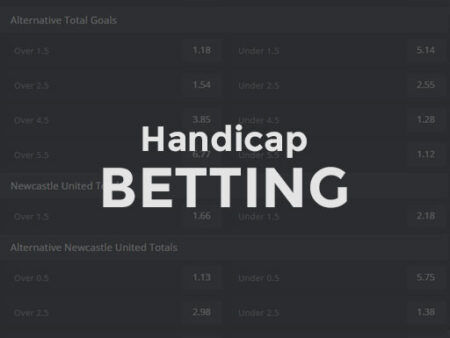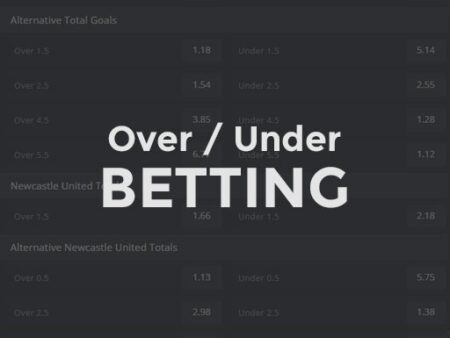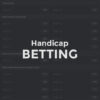Moneyline betting stand out for its simplicity and direct approach.
This form of betting strips away the complexities of point spreads and totals, asking bettors to focus solely on the outcome of a game—making it a favorite among both novices and seasoned gamblers alike.
Key Takeaways:
- Moneyline bets simplify the betting process by requiring the selection of the outright winner, making them accessible and straightforward for all levels of bettors.
- Understanding the dynamics between underdogs and favorites is crucial, as it influences potential payouts and betting strategies, highlighting the importance of thorough research and analysis.
- Effective bankroll management and a keen eye for value are essential in maximizing the potential of moneyline bets, ensuring a balanced and strategic approach to sports betting.
Basics of Moneyline Betting
Moneyline betting is one of the most straightforward ways to wager on sports.
This type of bet focuses on picking the outright winner of a game or event, regardless of the score or margin of victory.
Unlike point spread betting, which involves betting on a team to win by a certain number of points, moneyline bets simply require you to choose the victor.
Here’s a quick overview to get you started:
Understanding The 3 Types of Moneyline Bets
- The Favorite: The favorite is considered more likely to win the game. Favorites are indicated with a negative moneyline (e.g., -150), meaning you would need to bet $150 to win $100. The favorite’s odds reflect the amount you need to wager to win a certain amount, usually $100, due to their perceived higher chance of winning.
- The Underdog: The underdog is seen as less likely to win the game. Underdogs are shown with a positive moneyline (e.g., +200), meaning a $100 bet would win you $200 if they’re victorious. The underdog’s odds provide a higher payout due to the perceived risk involved in betting on them.
- Even or Pick ’em: When a game is too close to call, it might be listed as even or pick ’em, meaning there’s no clear favorite or underdog. This can be displayed as +100 or -110 for both teams, indicating that the game is expected to be very competitive. Betting on a pick ’em game means the payout is roughly equal to the wager amount, reflecting the 50/50 nature of the outcome.
Understanding the Odds
Favorites are usually represented with a minus (-) sign (e.g., -150), indicating the amount you need to bet to win $100.
Underdogs are shown with a plus (+) sign (e.g., +130), signifying the amount you’d win for every $100 wagered.
Learn more about odds from this guide: How to read sports betting odds.
Key Components of the Moneyline
- Favorites vs. Underdogs: The favorite is the team expected to win, and the underdog is the one expected to lose. The odds reflect their chances accordingly.
- Payouts: Betting on the favorite yields smaller payouts due to their higher likelihood of winning, whereas betting on the underdog can lead to larger winnings due to their lower expected chance of victory.
- No Point Spreads: The final score’s margin doesn’t affect the outcome of the bet. The only concern is which team wins.
The Three Types of Outcomes on a Moneyline Bet
- Win: If the team or player you bet on wins the game or match, your bet is a win. This is the most straightforward outcome, directly related to the performance of your chosen side.
- Loss: If the team or player you bet on loses the game or match, your bet is a loss. No matter how close the game was, if your pick doesn’t come out on top, the bet doesn’t pay out.
- “Draw” or “Draw no bet”: In sports where games can end in a tie, like soccer, a draw can be a betting outcome. If you bet on a win outcome and the match ends in a draw, you lose your bet. However, some sportsbooks offer “draw no bet” options, where if the game ends in a draw, your bet is refunded.
Calculating Moneyline Payouts
Whether you’re backing the favorite or the underdog, knowing your potential return on investment can help you make more informed betting decisions.
- For Favorites (Negative Moneylines): The moneyline number (e.g., -150) indicates how much you need to bet to win $100. The formula to calculate your winnings is: (Your Stake / Moneyline Odds) * 100. So, if you bet $150 at -150 odds, your payout would be $100 profit plus your original $150 stake, totaling $250.
- For Underdogs (Positive Moneylines): The moneyline number (e.g., +200) shows how much you would win on a $100 bet. The formula here is straightforward: (Your Stake * Moneyline Odds) / 100. If you place a $100 bet at +200 odds, your payout would be $200 profit plus your original $100 stake, totaling $300.
Moneyline Prices and Variations
Do moneyline prices differ from one sportsbook to another?
Yes, moneyline prices can vary between sportsbooks due to differences in the bookmakers’ analyses, the bets they have taken, and their desired profit margins. It’s always a good idea to shop around for the best odds.
Can the moneyline price for MY bet change, once I’ve bet it?
No, once you’ve placed your bet, the odds at the time of your bet are locked in for that wager. Future changes in the moneyline will not affect bets that have already been placed. This ensures that the terms of your bet remain consistent, regardless of how the market moves after your wager is made.
When to Bet the Moneyline
Betting the moneyline is a popular strategy for several reasons, particularly for its straightforward approach: you’re simply choosing who will win.
However, knowing when to place a moneyline bet instead of opting for point spreads or totals can significantly impact your betting success.
Ideal Scenarios for Moneyline Bets:
- Clear Favorites: When you’re confident in a team’s or individual’s dominance over their opponent, a moneyline bet can offer a safer, although sometimes less lucrative, betting option.
- Underdog Opportunities: Betting on underdogs can be more profitable with moneyline bets. If you believe an underdog has a solid chance to upset a favorite, the potential return on a moneyline bet can be substantial compared to betting against the spread.
- Low-Scoring Sports: In sports where points are at a premium, such as hockey or soccer, betting the moneyline makes sense. The narrow margins of victory make the point spread less reliable than simply picking the winner.
- Avoiding the Point Spread Complexity: Sometimes, the point spread offers a challenging betting landscape, especially in games expected to be very close. In such cases, removing the complexity and betting on the outright winner can be a strategic move.
Betting Line Strategies
Successful moneyline betting involves more than just picking winners and losers; it requires strategic thinking and an understanding of value.
Strategies for Moneyline Betting:
- Value Hunting: Always look for value in moneyline bets. This means finding bets where you believe the chances of an outcome happening are greater than what the odds suggest.
- Bankroll Management: Properly managing your bankroll is crucial. Betting a consistent percentage of your bankroll on games reduces the risk of depleting your funds on a few bad bets.
- Research and Analysis: Detailed research on teams, weather conditions, head-to-head records, and other relevant factors can give you an edge in moneyline betting.
- Live Betting: Moneyline odds can change dramatically during a game. If you have a good sense of how a game will unfold, you can find value in live betting by placing moneyline bets after the game has started.
Comparing Moneyline and Point Spread Bets
You need to know the difference between moneyline bets and point spread bets is vital for any bettor. While both forms of betting are popular, they cater to different strategies and preferences. Let’s see a comparison of them for further clarifying:
Key Differences
- Simplicity vs. Strategy: Moneyline betting is simpler, focusing on the outright winner. Point spread betting requires a more strategic approach, considering not just who will win but by how much.
- Payout Differences: Moneyline bets on favorites typically offer lower payouts than point spread bets because they’re seen as safer. Conversely, moneyline bets on underdogs can offer higher payouts than spread bets.
- Ideal Sports: Moneyline bets are more common in low-scoring sports like baseball, hockey, and soccer, where winning margins are often slim. Point spread bets are prevalent in higher-scoring sports like football and basketball, where the victory margins can be significant.
Choosing Between the Two
Deciding whether to place a moneyline bet or a point spread bet depends on your confidence in the outcome, your appetite for risk, and the sport you’re betting on.
Moneyline bets are ideal for when you’re confident in an outright winner, while point spread bets can offer better value when you have a sense of the game’s competitiveness and expected victory margin.
Questions I Get Asked
Over the years I started seeing a pattern for questions I am receiving about the moneyline and I want to share the answers with you.
What Does a +200 Moneyline Mean?
A +200 moneyline represents the odds for an underdog, indicating a higher risk but also a higher reward. If you bet $100 on a team with +200 odds, you’re betting on a less favored team but stand to win $200 if they win, plus your initial $100 stake back. This system makes betting on underdogs appealing to those looking for significant payouts, as it quantifies the return on a $100 investment, making the risk-reward calculation clear and straightforward.
Is There Juice on a Moneyline?
Yes, there is typically “juice” or “vig” (short for vigorish) applied to moneyline bets, just as there is with other types of sports bets. The juice represents the fee a sportsbook charges for taking your bet. It’s built into the odds provided for the favorite and the underdog.
For example, if the favorite is listed at -150 and the underdog at +130, the difference in these odds includes the bookmaker’s commission. Understanding the juice is crucial for bettors aiming to maximize their long-term profitability, as it affects the true cost of a bet and the necessary win rate to be profitable.
Can you put moneyline bets in parlays?
Yes, moneyline bets can be included in parlays. This allows you to combine multiple moneyline bets into one wager for a chance at a higher payout, with the caveat that all selections in the parlay must win for the bet to pay out.
Can you put money and spread bets together in parlays?
Yes, you can mix moneyline and point spread bets within the same parlay. This versatility lets bettors take advantage of different types of bets to maximize potential returns, though it also increases the risk.













